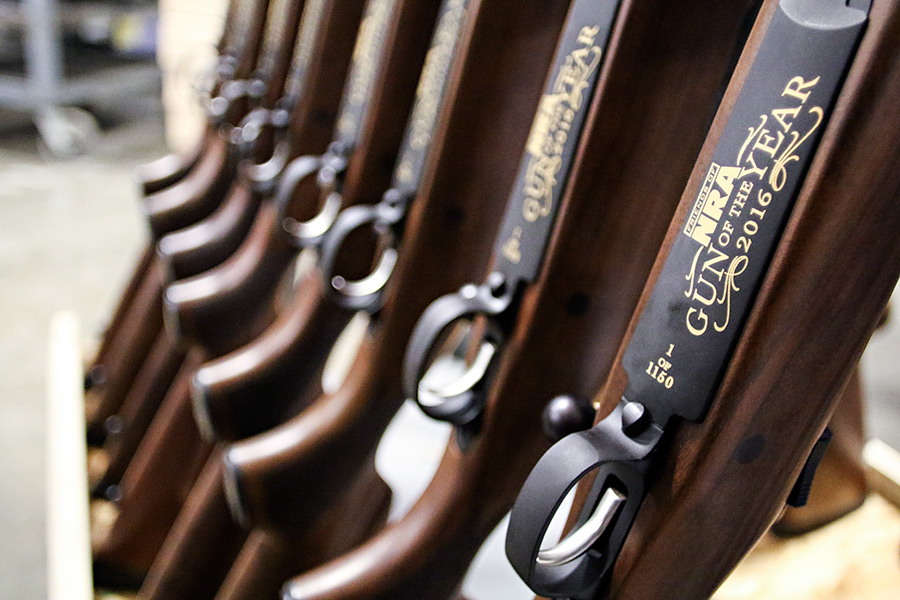If you know an outdoor recreationist who hunts, shoots, fishes, or boats in Montana, you know a conservationist.
Despite the well-worn typecast pitting tree-hugging, critter-loving hippies against gun-toting hunters, the North American Conservation Model and the modern environmental movement is rooted in hunters and fishers and their engagement with the great outdoors.
To wit: the lion’s share of funding for state wildlife conservation programs comes from the sale of guns, ammunition, and other hunting supplies, due in large part to an 82-year-old piece of legislation called the Federal Aid in Wildlife Restoration Act, also known as the Pittman-Robertson Act.
The Pittman-Robertson Act puts an 11 percent tax on sales of firearms, firearm ammunition, archery equipment, and arrow components and distributes the funds to state governments for wildlife habitat projects. When President Franklin Roosevelt signed the act into law in 1937, it redirected an existing tax on firearms and ammunition to the U.S. Department of the Interior to fund state programs for habitat management, wildlife surveys, species reintroduction, and hunter education.
The “user-play, user-pay” approach remains the touchstone of conservation.
A little more than a decade after Pittman-Robertson, the enactment of the Federal Aid in Sport Fish Restoration Act, also known as the Dingell-Johnson Act, enacted a similar tax on sport fishing. In addition to state licensing dollars, the combination of Pittman-Robertson and Dingell-Johnson funds make up about 75 percent of the average state fish and wildlife budget, contributing more than $20.2 billion since the passage of the acts.
And while fishing enjoys an uptick in participation, hunting-related activities are declining, especially when considered as a percentage of the overall population — recruitment of younger hunters to the sport is down, while fewer baby boomers are heading afield as they age.
A U.S. Fish and Wildlife Service survey shows that only about 5 percent of Americans hunt — half of what it was 50 years ago — and the decline is expected to accelerate over the next decade. The downturn is likely to have a significant impact on conservation given that state governments rely on the revenue from new hunting licenses to make the 25 percent funding match required by Pittman-Robertson.
The issue has gained greater urgency in recent years.
Between 2011 and 2016, the number of hunters declined by 16 percent — from 13.7 million to 11.5 million people. Additionally, the hunting population aged slightly, while the average number of days hunters spent afield decreased from 21 to 16. And, perhaps most distressing for hunters relying on healthy wildlife populations, spending on hunting equipment dropped 8.6 percent, from $14 billion to $12.8 billion.
In Montana, fishing is the most popular outdoor recreation activity, in addition to camping and trail sports, according to a recent report by the Outdoor Industry Association. In 2017, 16.5 percent of the U.S. population, ages 6 and up, went fishing at least once. This is an increase of 0.5 percentage points since 2016 and the highest participation rate since 2009.
Meanwhile, hunting didn’t make the cut.
“It could have a really catastrophic impact if the numbers continue to go down,” Land Tawney, president and CEO of Backcountry Hunters and Anglers, said. “Hunters have for a long time been the majority of our management and conservation of wild species. There’s a proud history there, but it’s also an opportunity now for others to step up and join hunters in carrying on the conservation legacy.”
To that end, policymakers are seeking ways to amend the current legislation to allow more flexibility in how it manages the funds — specifically, lawmakers want to use some of the new revenue to recruit, retain and educate future generations..
“This legislation will make important updates to the Pittman-Robertson Fund to ensure future generations can carry on this treasured pastime of hunting and recreational shooting while conserving wildlife for outdoorsmen and women to enjoy and experience,” U.S. Sen. James Risch, R-Idaho, said of the bill.
